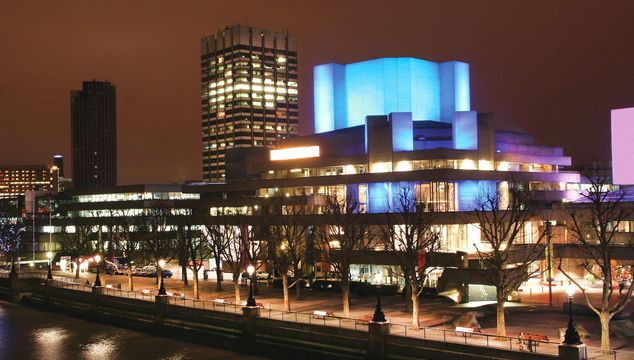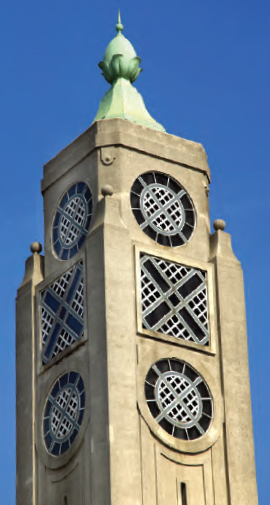
The south side of London’s river has historically played second fiddle to its sophisticated northern counterpart, always pampered with patronage, transport and money. Years of regeneration projects and downright lack of space, however, have slowly chipped away at the South Bank’s shabby image, and it has finally found its place in the sun.
To walk from Tower Bridge to Putney would take the best part of a day, and that’s without stopping off to enjoy the sights you’re passing. Just as no one sensible would lump the City in with Westminster, Embankment and Chelsea, so Tower Bridge, London Bridge, Bankside, the South Bank and beyond are all destinations in their own right. London’s south side warrants several visits.
Since medieval times, “south of the river” was the place Londoners went for fun, a legendary no-man’s land cab drivers refused to visit. The theaters, bearbaiting and brothels of Shakespeare’s day, the notorious Vauxhall Pleasure Gardens of the 18th century and the famous 1951 Festival of Britain, built on a bomb site, all promised escape.
The festival’s site now forms the epicenter of a modern London pleasure zone. The Royal Festival Hall was, as the name suggests, built for the expo. It’s an extraordinary piece of postwar architecture, well worth enjoying. It has recently been renovated, stripped back to its original modernist lines. The hall hosts classical, contemporary and high-class pop events, and is a real treat to visit. It has a varied foyer program and a rather nice restaurant, the Skylon (named for the sadly lost centerpiece of the festival) boasting great food and an even better view of Westminster, the Embankment and the Thames.
Its younger, quirkier sister, the Queen Elizabeth Hall, is sadly closed for muchneeded renovation until 2018, but her roof garden, which softens the Brutalist architecture, is still open and worth a (free) visit.
Another love-it-or-hate-it Brutalist masterpiece, the National Theatre, is most definitely open for business. A sprawling labyrinth of cast concrete, it’s actually much softer than it first appears, and the choice of productions in its three main spaces is wide, challenging and usually excellent. Backstage tours are available, but I’ve never been on one.
The entire complex may be reached via the Thames Path, which at this point is a wide promenade, with fairy lights in the plane trees and dozens of eateries of varying quality.
Skateboarders have been whizzing round the undercroft below the buildings since the 1970s. If you’re walking across the delightful Hungerford Bridge, do look down at the southernmost pier at their secret skateboard graveyard. Each broken board has its own memorial, lovingly posted online.
Run the sculpture-garden gauntlet of living statues in the walk up to the London Eye, still one of my top picks for any visit to the capital. On a clear day (or night), there really is something special about this most touristy of landmarks. Even I love being a tourist sometimes.
Unless you have children with you, another tourist mecca, the former County Hall, is probably not one for the must-do list. It houses attractions such as the London Dungeon, Sea Life London Aquarium and Dreamworks’ Shrek’s Adventure, all squarely aimed at the family market.
As you pass under Waterloo Bridge, however, a large market of second-hand book stalls makes for entertaining browsing, after which you might enjoy a coffee in the lobby of the British Film Institute or visit one of their four cinemas, always showing something offbeat. If you prefer your screens big, the massive, cylindrical IMAX cinema fills the entirety of Waterloo roundabout, now cloaked in tumbling Virginia creeper; it is rather beautiful to behold.
Coming out of the underpass the other side allows one of the best (and only) ways to experience the grand, Art Nouveau entrance of Waterloo station, obscured from most angles by later construction. There are some curious things to see in the station itself, as there are in any London terminus, and I often nip up to the modern mezzanine to enjoy a coffee in Benugo, a decent chain, overlooking the bustle below. The former Eurostar line to Paris (now removed to St. Pancras) is being redesignated as a local line, so is currently under wraps.
Behind the station, Waterloo turns into a different beast. Traditionally rather scruffy, the Cut is a funny little street full of curious, single-interest shops, though these are, like the rest of the capital, one by one, being swallowed and turned swanky. A lovely survivor, I Knit London describes itself as a “sanctuary for knitters,” and it is, indeed, more like a club than a store. It’s certainly the only yarn shop I know of that boasts a licensed bar.
At the end of the Cut, in Westminster Bridge Road, a rather dull entranceway labeled Westminster Bridge House is worth scouting out for sheer novelty value. Looking up, you’ll see a grand Victorian edifice, the sole remnant of the Necropolis Railway—a railway for the dead. Well-to-do Londoners would bury their loved ones in the leafy, suburban Brookwood cemetery, traveling by train with the coffin. The railway was bombed in World War II and never rebuilt.
[caption id="TakeaWalkontheSouthSide_img3" align="alignleft" width="342"]

Connoisseurs of the curious could also dip into Leake Street, a tunnel passing under the railway station. It may look intimidating, but it’s pretty safe and one of the only places in London where street artists are allowed to spray any surface they like with whatever they like. Also in Leake Street is the entrance to the mysterious Vaults, a warren of underground tunnels, dank and dripping, now used for alternative arts. I’ve been to many weird and wonderful events there, and there are still interesting happenings, but somehow the Vaults have lost the anarchy they once had and become part of the Arts Establishment.
Across the main road from the Cut, the Old Vic stands proud, 200 years old next year. No longer the domain of Kevin Spacey, the glamorous old lady still presents top-class, classic theater. If you continue past the Old Vic, along the main road, top to visit the Imperial War Museum. The old Bedlam asylum, it’s a grand building and has an exciting program of excellent exhibitions. It’s a little out of the way, but there are plenty of signposts.
Back on the Thames Path, if you’re looking for somewhere to eat, try Gabriel’s Wharf. This little complex of independent shops and cafes has a wide variety of places to eat, from pie shops to creperies.
Further on down, the OXO building is probably best known for its illuminated Art Deco tower. Originally built as a workaround to a local law that forbade neon signs, the OXO stock-cube company built their headquarters with windows in the shape of their brand name, which, when the lights were on, negated any need for neon. Now a swanky restaurant with a glamorous balcony is open on the top floor; the brasserie on the floor below is more affordable and just as fun.
That’s as far east as I’ll go this time; anything further becomes Bankside—and a different beast entirely.





Comments